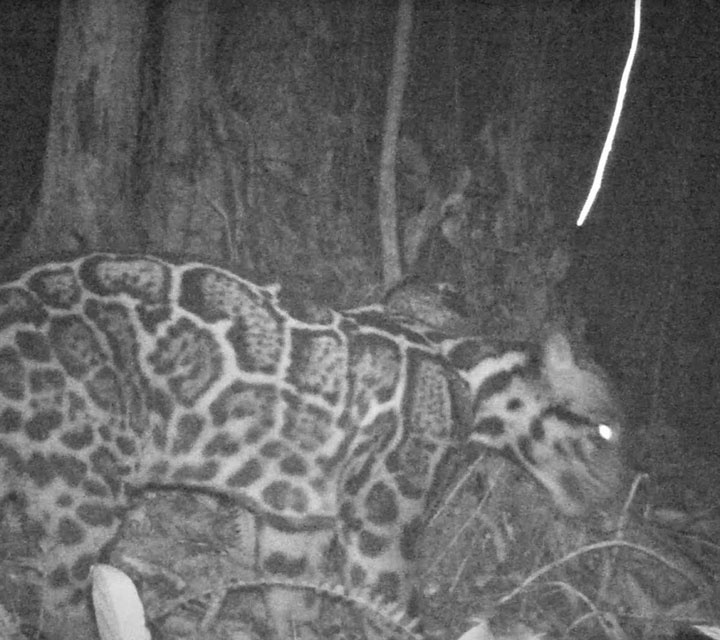
The rare species caught on camera trapped while walking in the night in the concession forest of the KMP.
Borneo Leopard (Bornean clouded leopard / Neofelisdiardi) caught on camera trap while walking in the night in the concession forest of the Katingan Mentaya Project (KMP) in Katingan, Central Kalimantan. The appearance of this animal in the region is quite surprising, because these animals are not only very rare, but are also shy and difficult to find. The population of one of these wild animals is threatened because the forest that has been its habitat has been displaced as a plantation area and mining.
Tiger limbs included in hundreds of species of rare animals protected by Law No. 55/1995 concerning Conservation and Biological Resources. In the Act, Article 40 clearly stipulates that all people are prohibited from arresting and possessing rare animals. Referring to the World Wildlife Fund (WWF) data, Borneo Leopard that are newly classified as new species are estimated to have left between 5,000 and 11,000 in Kalimantan and 3,000 to 7,000 in Sumatra.
These rare animals have patterns such as small clouds, double striped patterns on the back, and gray hair colours that are darker than similar species. Neofelis diardi is the main predator in the forests of Borneo, with food from monkeys, deer, birds and lizards. The size of canines against his body is the longest among other cats.
The findings indicate that the Katingan Mentaya Project forest is preserved is still a habitat for wild animals such as the Borneo Tiger.
Buy carbon credits from Katingan
Climate change is a global challenge that requires global action. We can help you meet your commitments to deliver a brighter future.


